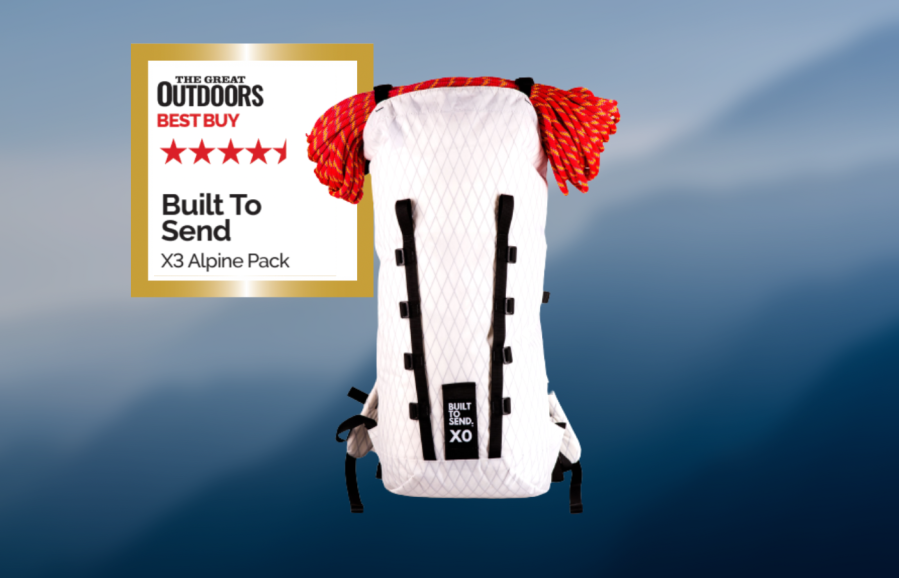Chris Townsend is impressed with the Built to Send X3 Alpine minimalist lightweight super-strong pack the company says is “virtually indestructible.”
Handmade in Great Britain, Built To Send ultralight packs are unusual. The design is minimalist, the construction and materials bombproof. They are, says the company, “virtually indestructible.” The Built to Send X3 Alpine is the largest pack in the range with a 50-litre capacity with the top folded over and a maximum of 65 litres with the top extended.
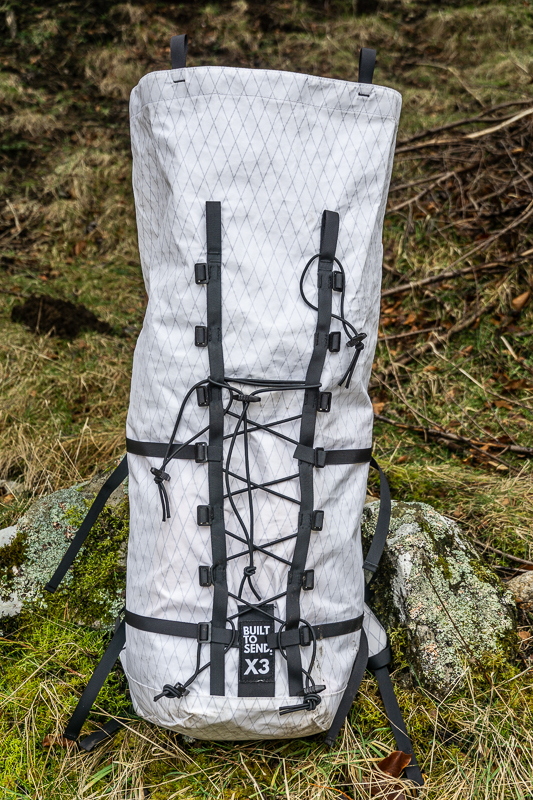
The X3 is made from a waterproof composite fabric described as “one of the toughest materials on the planet”. The main body is just one piece of fabric so there are few seams. A proprietary foam based on the type used in fighter pilot seats is used for the back panel, shoulder straps and hipbelt. The hardware is custom-designed and made from aerospace-grade aluminium with a hard-anodized coating. The stitching on structural seams exceeds military specification for safety-critical equipment. Overall the pack is designed and built to withstand the roughest treatment time after time after time.

The pack itself is a simple tube with attachment loops down the sides and daisy chain webbing on the front. There are no external pockets, just an internal one for items like wallet and keys. The pack also comes without any attached straps or shockcord. However an ‘Alpine Customisation Pack’ is supplied with it. This consists of four webbing straps, a long section of shockcord, and short shockcord loops for ice axes. I attached these as I was going to use the pack in winter conditions with ice axe, crampons, and sometimes skis or snowshoes attached. I also found the front shockcord useful for stuffing in wet waterproofs so they didn’t have to be inside the pack.
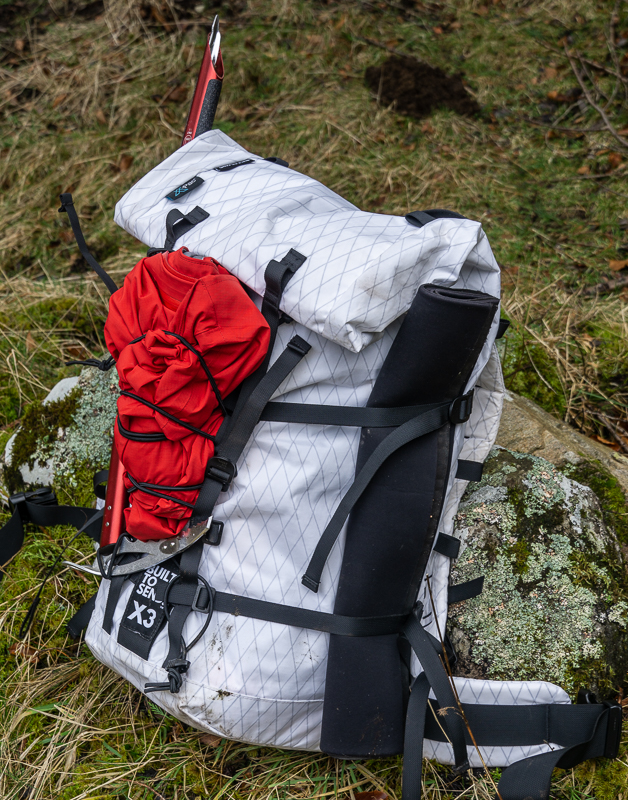
The X3 durability credentials are impressive. It certainly feels tough and is extremely well-made with triple-stitched seams and bar-tacked webbing. Built To Send says it’s so strong it can handle any achievable load. Using it as a winter daypack I haven’t had more than 10kg in it yet. As it’s designed for hauling up rock and ice chimneys I doubt anything I use it for will come close to testing its capabilities or strength.
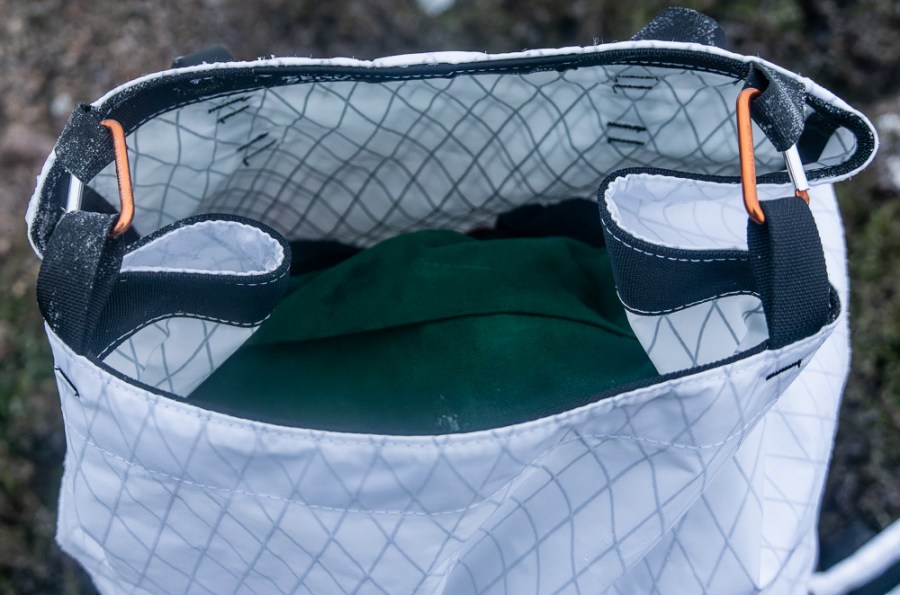
Being used to packs with pockets I had to rethink how I packed with the X3. Items that I’d pack singly in pockets soon disappeared towards the bottom. Drybags and stuffsacks were the answer to keep items together. The pack fabric is stiff enough that it doesn’t flop over when opened, so these bags can be easily accessed. Rather than just rolling the top to close it Built To Send recommend a method called x-fold that involves pinching in the sides at the top and then folding them over. I did find this a little awkward with cold fingers or with thick gloves on so I cheated and added mini-carabiners to the loops at the top of the pack so I could clip them together.
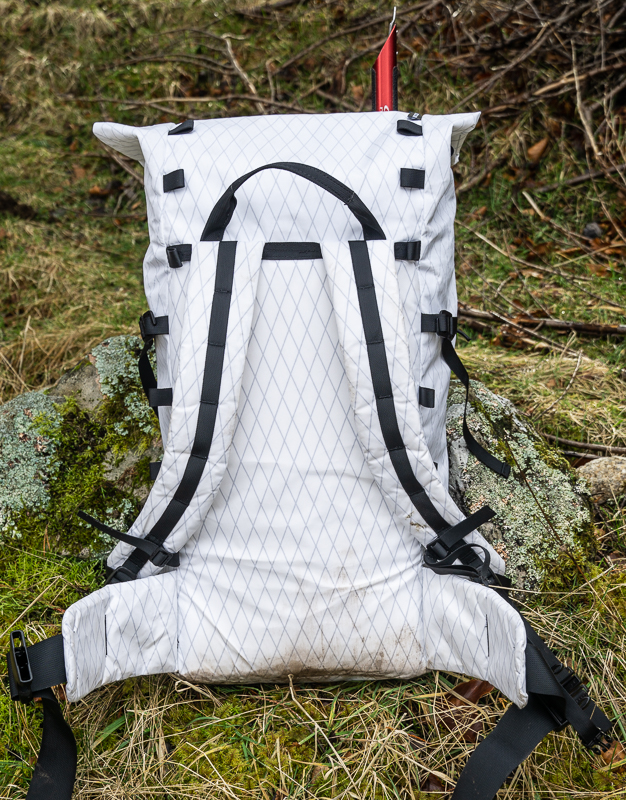
I had wondered how comfortable the X3 would be to carry as it lacks a frame or any back shaping. I needn’t have been concerned. The foam pad in the back is thick enough and stiff enough not to buckle under the load (and to stop items poking into you) and the hipbelt, made from the same foam, is supportive. Designed originally for climbing the pack is body-hugging and very stable. Overall it’s a great pack to carry.
As a winter daypack, the X3 is excellent, easily holding everything needed and very comfortable on the back. I’m impressed. Later in the year I’ll try it for backpacking and write a follow-up. In the meantime, if you want a lightweight pack that’ll probably last forever the X3 could be the answer. It is expensive but then it should never need replacing. It’s also only available in white or black (the latter is very slightly heavier) and in one back length. The last shouldn’t be too big a problem as the simple back doesn’t require precise fitting.
BEST BUY: This product has been awarded our ‘Best Buy’ endorsement, meaning our reviewer believes it to be one of the best items of its kind available.
READ MORE: Chris Townsend takes the X3 on a two-week trip in the Rough Bounds

